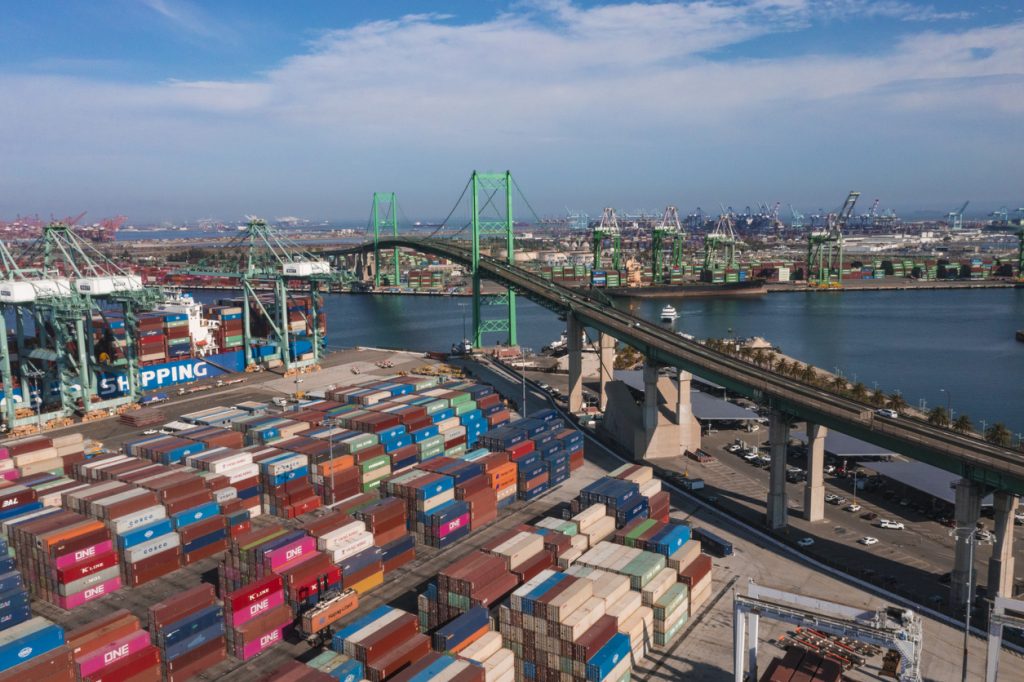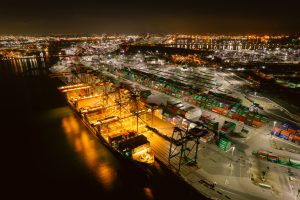In case you missed it, operations at our local ports of Los Angeles and Long Beach have been caught in the center of a vortex of port negotiations for months on end. The ILWU (International Longshore and Warehouse Union) represents longshore workers. The PCA (Pacific Maritime Association) represents shippers. The pair have been negotiating new contracts since May 2022. The previous contract expired on July 1, 2022. Nearly a year later, it looks like an agreement has finally been reached.
Port negotiations for all West Coast ports have centered around two core issues
Port negotiations aren’t impacting our local ports alone. All ports on the West Coast, 29 in total, have been involved in the longstanding verbal ping-pong game. The original priorities of the ILWU were to address longshore worker wages and the role of automation in the industry. Most of the negotiations have taken place behind closed doors. In March, however, tensions intensified. Some employers accused unionized dockworkers of intentionally slowing cargo handling at both the ports of Los Angeles and Long Beach.
They’re two of the world’s busiest ports, serving as our nation’s most crucial gateway to international imports. Slowdowns create a concerning chain reaction, much like a minor fender bender can escalate to hours of traffic. When dockworkers stopped staggering work shifts during mealtimes, it led to two hour-longs shut down each day, causing frustrating delays. The ILWU president, Willie Adams, made a valid point: Everyone should be entitled to a lunch break, including dockworkers.
Union officials accused the PMA of glossing over other reasons for the slowdowns in order to influence public opinion. In early April, however, the ILWU Local 13 withheld workers from their shifts. This effectively closed both the ports of Los Angeles and Long Beach. The reason, according to the ILWU, was benign. The closure was intended to give union members who observe religious holidays time to spend with family over Easter weekend. Many shippers felt the withdrawal was done deliberately to intensify the need to come to an agreement.
This marked the first time the two organizations have publicly come to blows during this year’s negotiations, and we hope it’s the last– Especially considering much of our nation’s cargo was shifted from West Coast ports to the East Coast as a result of the ongoing workflow disturbances. As of April 20th, it appears that it will be.
After 10 months, a tentative end to port negotiations is in sight
All the way back in July of 2022, the union and the PMA announced that they had agreed on the terms of maintaining worker health benefits. They also shared a joint press release in February 2023 announcing that they were hopeful a deal would soon be reached. The two parties have continued meeting in San Francisco to collectively bargain. The early-April port shutdown served to twist the PMA’s arm. Whether intentional or not, it worked. Port of Long Beach Executive Director Mario Cordero believes the end of port negotiations could potentially be finalized within 30 days.
That’s an encouraging sign, and it’s not the only positive worth noting. While the Easter weekend closures did cause a temporary slowdown, the drop in port container volumes is caused by more than contentious labor talks. It’s a sign of a shift back to normality after a surge in cargo in 2021 and 2022, following the lockdowns and supply chain crash in 2020. All West Coast ports have seen a steep decline in cargo year-over-year, some by as much as 35% or more. After three years of pandemic-related turmoil, this is a sign of a return to equilibrium. If the ongoing port negotiations continue moving in the right direction, the ports are forecasted to have a much less nervewracking and unpredictable 2023.








